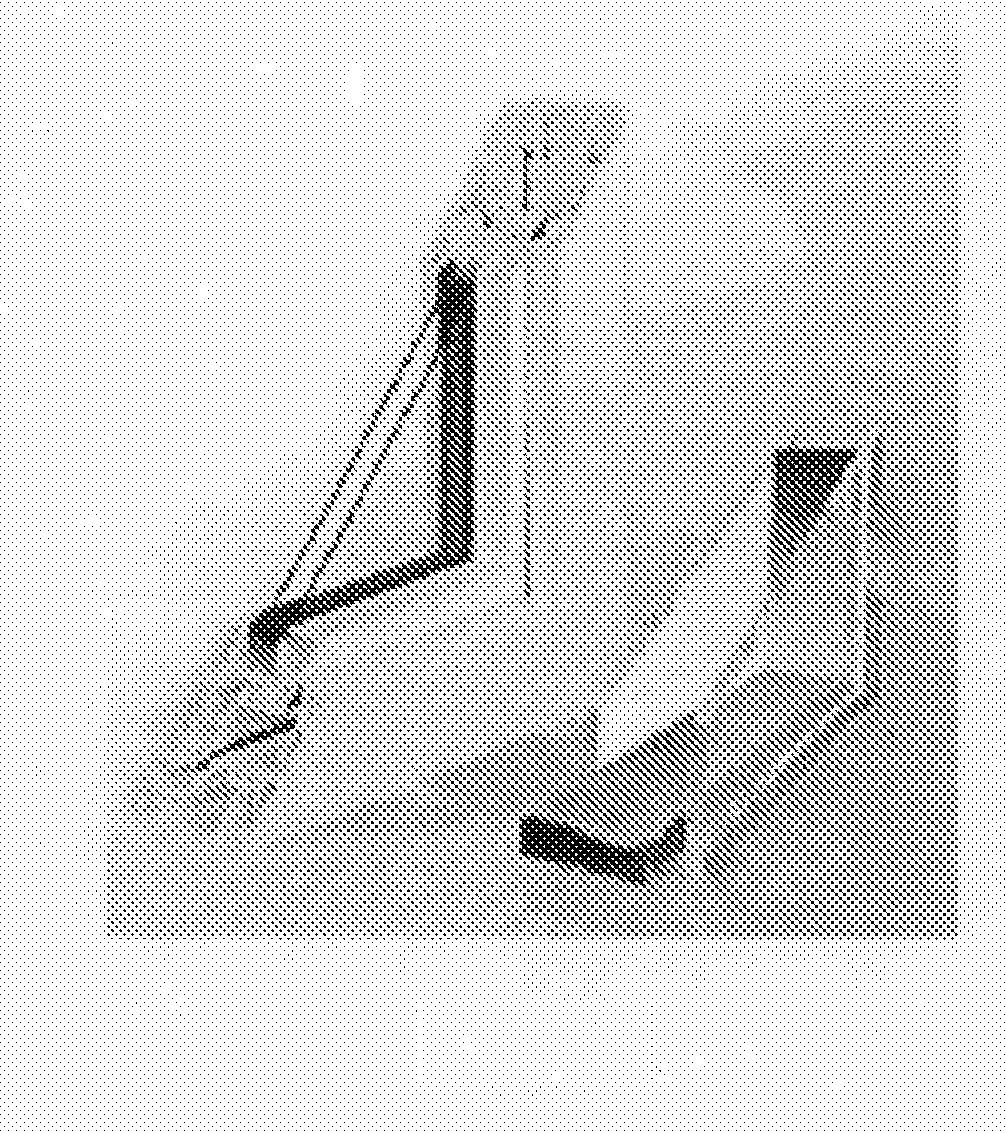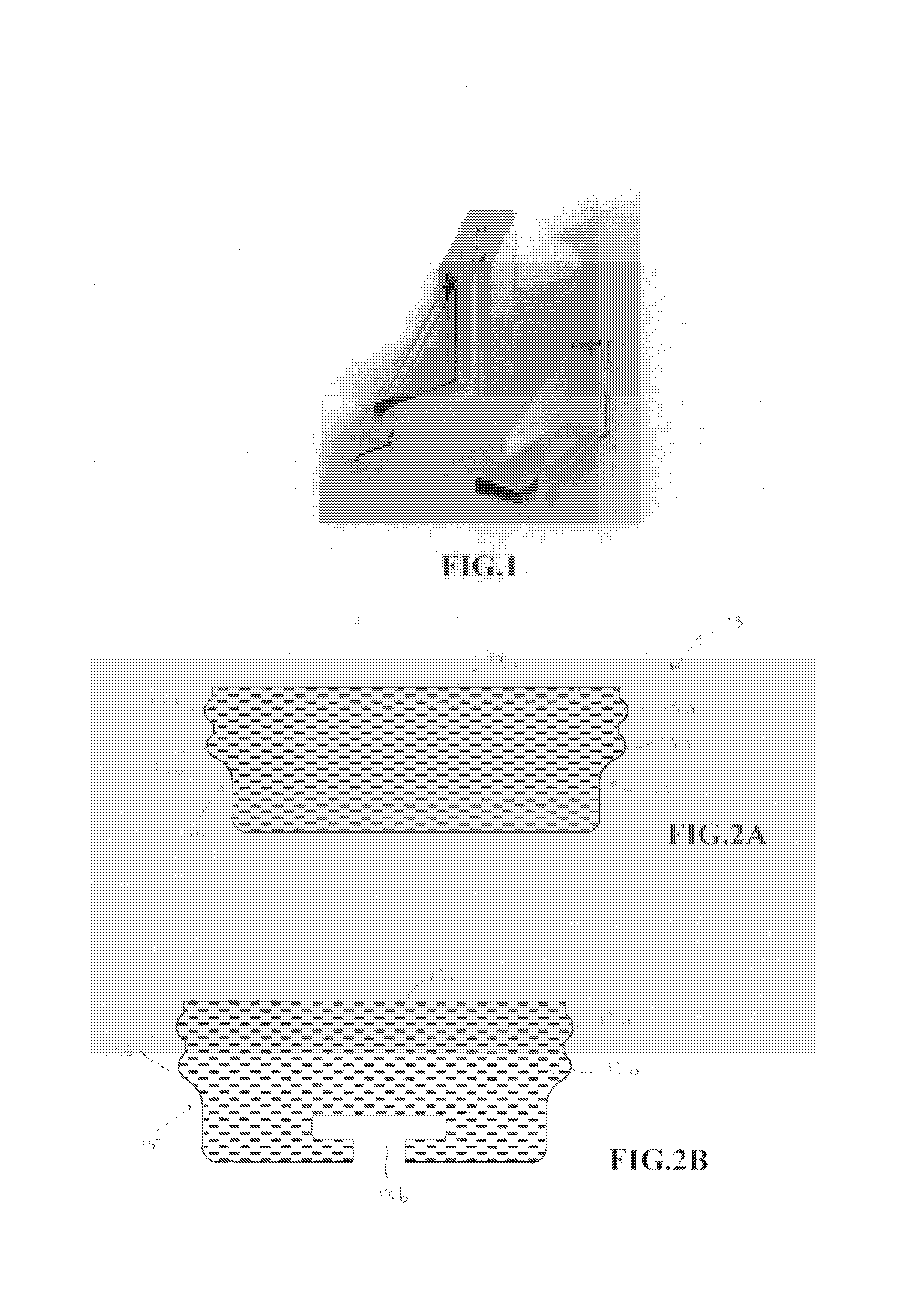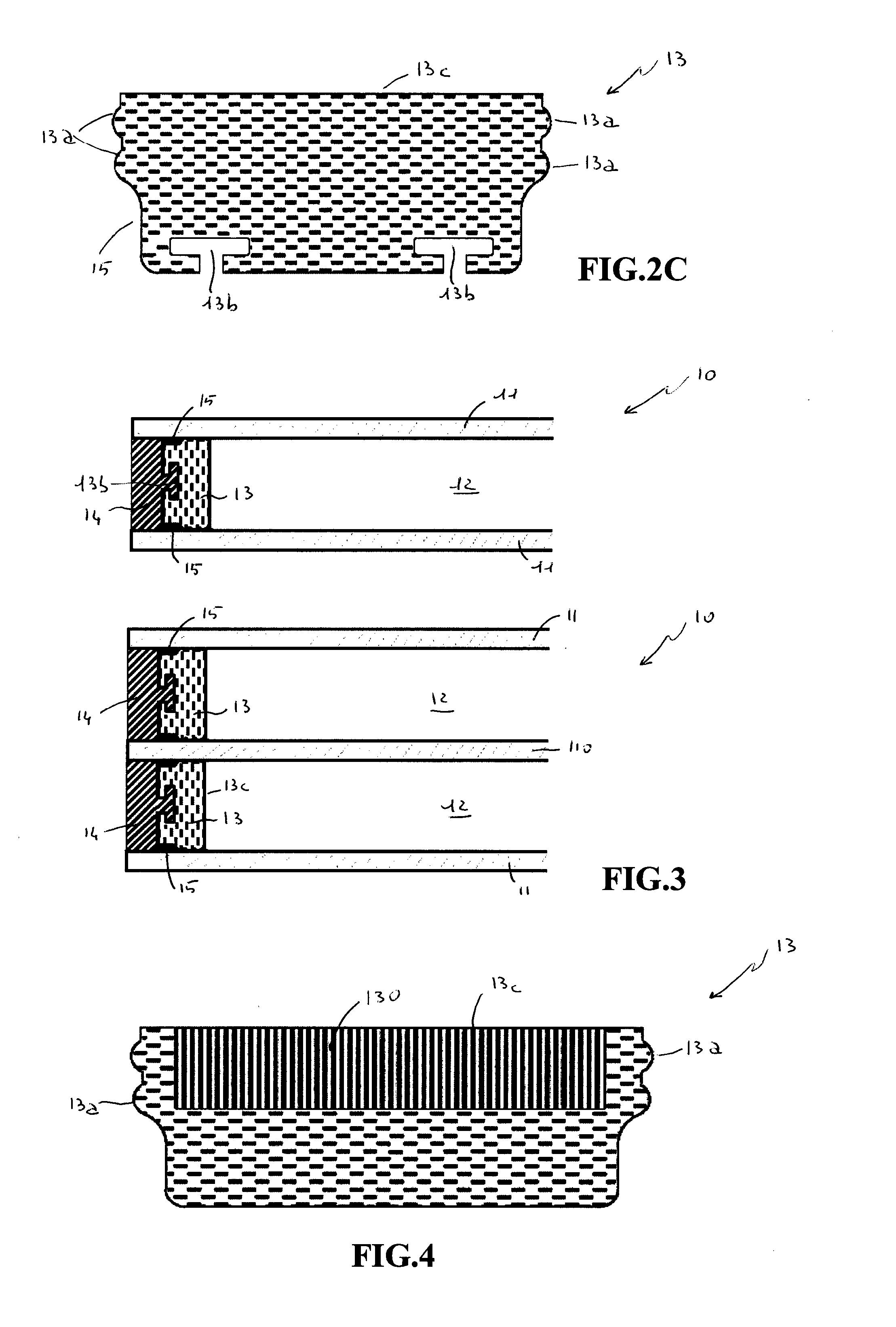Nevertheless, while performing their task, the spacers currently used present various drawbacks especially in terms of achieving high thermal performance.
A first drawback encountered with double / triple glazing units with traditional sealing, incorporating a conductive
metal spacer, is that it creates a
thermal bridge between the
layers of glass, which may result in condensation along the perimeter and even in the formation of ice in extreme winter weather.
Another drawback derives from the fact that with the conventional double / triple glazing units, the percentage of heat loss through the external
sealant is of approximately 5% of the total heat loss from a standard size window.
In addition, the low-
emissivity screens intercept part of the sun
radiation, causing the inside of the double / triple glazing unit to heat.
In very low winter temperatures, this can give rise to cracks and breakages in the glass.
Another drawback derives for the fact that when the
low emissivity coatings are on the internal sides of the double / triple glazing unit, the temperature of the air or gases enclosed therein can reach and exceed 70° C. These high temperatures trigger significant pressure variations within the sealed areas between the two glass panes, causing movements and curvatures of the individual glass panes that make up the glazing unit; in turn the glass panes cause
high stress in the glass and on the sealants.
In particular, in single sealed double / triple glazing units, breakages or loss of structural
soundness may occur due to the said high temperatures reached inside.
In winter, the temperature of the surface of the external glass may be −30° C., while the internal one may be +18° C. Because of this high thermal gradient, the difference of
thermal expansion of the two glass panes is greater, placing higher mechanical stress on the external sealant which over time can crack, losing its sealing capacity.
Consequently, in the case of infiltration of
moisture and condensation inside the low-
emissivity double / triple glazing unit due to the detachment and rupture of the external sealant, the low-
emissivity glass coatings with silver based compounds will oxidize rapidly, becoming opaque and whitish.
Among the various drawbacks there is also the fact that external sealants such as
polyurethane,
silicone and polysulphide materials are relatively permeable to noble gases such as
argon and
krypton, therefore over time a
gas leak forms, resulting in the loss of thermal performance.
In addition, it has been found that the protective low-emissivity
layers of high thermal performance glass intercept harmful solar ultra-violet
radiation (UV), preventing them from entering the buildings.
The plastic and
thermoplastic materials placed inside the glazing unit may undergo progressive thermo-mechanical deterioration due to
exposure to this high level of UV
radiation.
The use of “warm edge” spacers has allowed to reduce and limit the drawbacks previously described, but has given rise to new problems in the
processing phase, different from those typical of
metal spacers (
cut or bent).
The main difficulties encountered in the production phase and during useful life are due to the fact that their internal cross-section is smaller, and therefore—with the same length—they contain a quantity of
desiccant salt that sometimes is much lower; over time, this reduces the capacity to absorb the moisture present or that forms between the glass panes.
In addition, the high flexibility of the frame requires good manual skills to
handle and apply the glass without causing any deformation that may result in distortions, lack or abundance of external sealant on the finished product; if the sealant is abundant it may compromise the appearance of the product while if it is lacking it will reduce the seal against
humidity.
In particular, in the bending phase it is necessary to pay particular attention to the corners as regards squaring and ensuring that they do not exceed the width of the spacer, which can cause problems in the application of the internal sealant and in the subsequent pressing phase; the application of the butyl must be checked carefully, as regards the different shape, and the flexibility of the frame.
Another limitation highlighted is the fact that the adhesion test of the external sealants must be performed with great care, paying attention to the possible detachment of the two materials that make up the spacer.
In addition, changes must be made to the profile bending machines, cutters and drills, because appropriate tools are required due to the
hardness of the steel back and the characteristics of the plastic material; furthermore, the residues from the drilling of the plastic part may block the holes made with the
machine that introduces the
desiccant or
inert gas, thus preventing or hindering the filling operation.
In addition to the
processing problems, the materials that make up the rigid “warm edge” spacers frequently have different coefficients of linear expansion, therefore when the temperature varies inside the double / triple glazing unit, the stress on the butyl seal increases and this reduces the important protection of the glazing unit against the loss of gas, and possible infiltration of
humidity from the outside.
The “flexible” spacers currently available on the market also present problems.
In fact, it is difficult to obtain a uniform and constant application of the internal sealant on both sides of the foams due to the low elasticity of the spacer.
Furthermore, the spacer may not have a constant and uniform shape and geometry and may not be adequately resistant in the pressing phase of the double / triple glazing unit, due to the
low elastic modulus and
hardness achieved with flexible
silicone or
thermoplastic foam spacers.
In addition, difficulties have been encountered in the closure of the joint, which must be carried out at the end of the application of the spacer and must be hermetically sealed against
humidity and low
conductivity gases; difficulties have also been encountered in the adhesion of the flexible spacer to the external sealant, usually achieved by applying an external
metal barrier that is
atmospheric humidity proof and gas proof; additional difficulties concern the high permeability of foams and rubbers to low
thermal conductivity gases.
 Login to View More
Login to View More 


